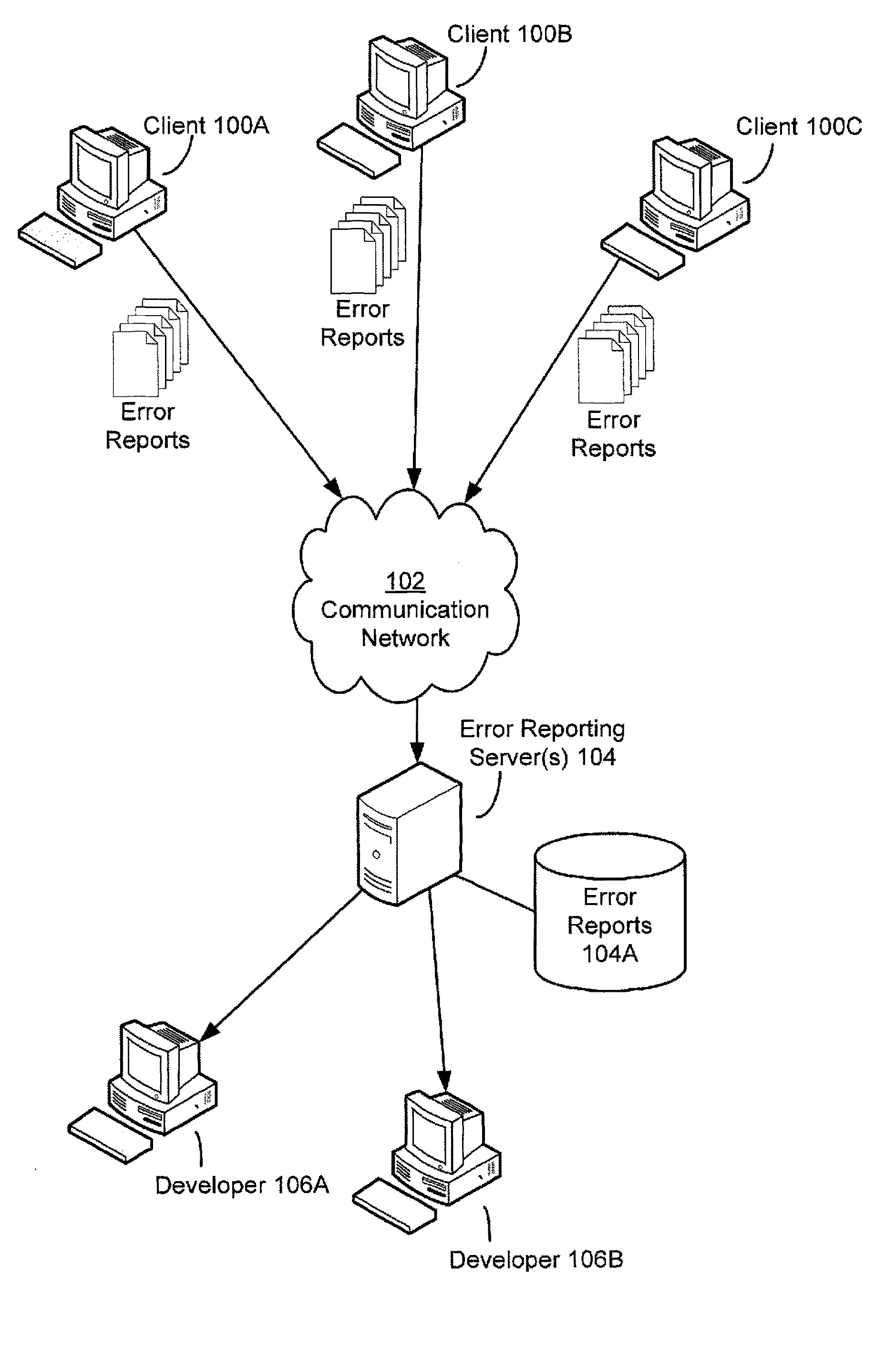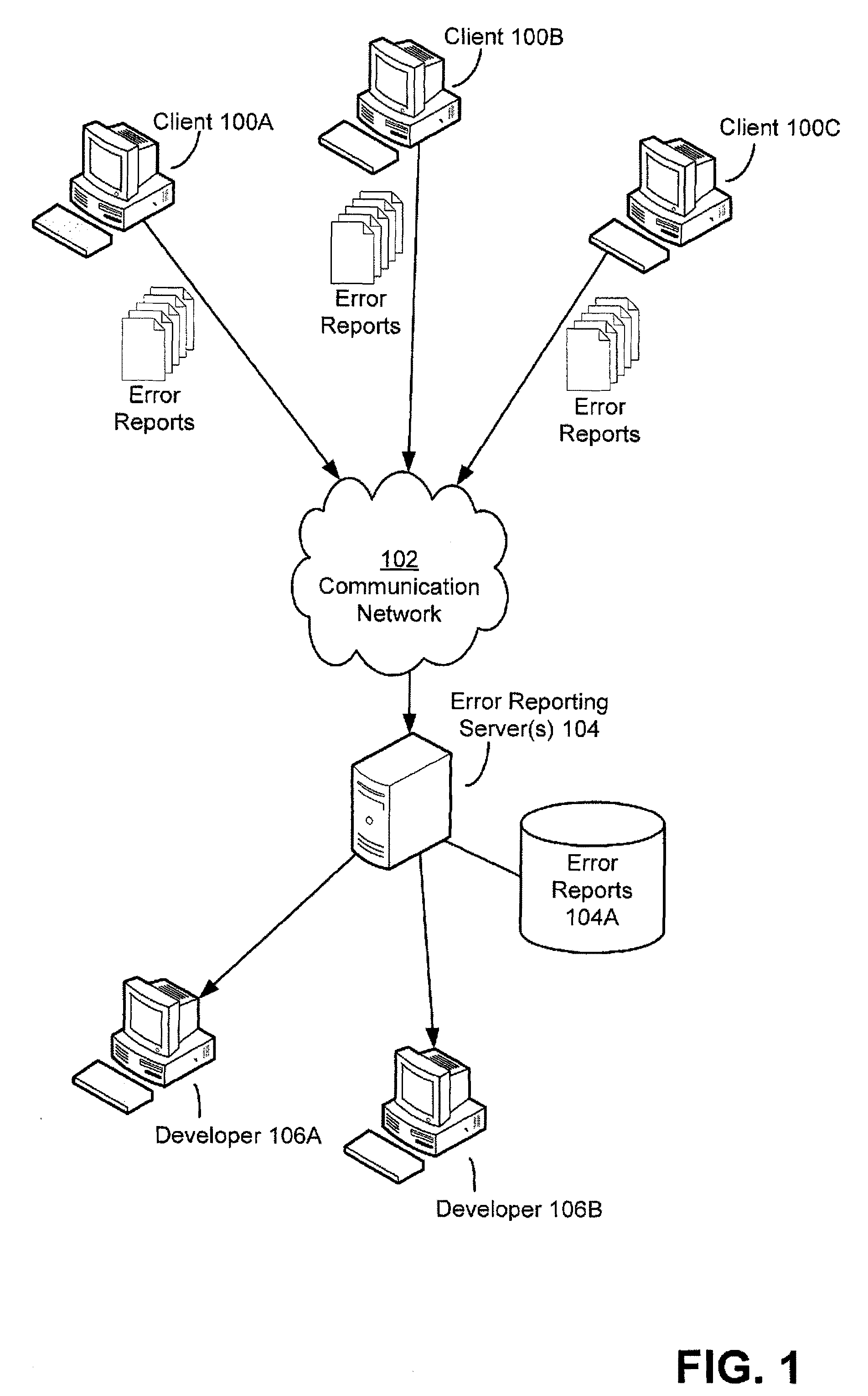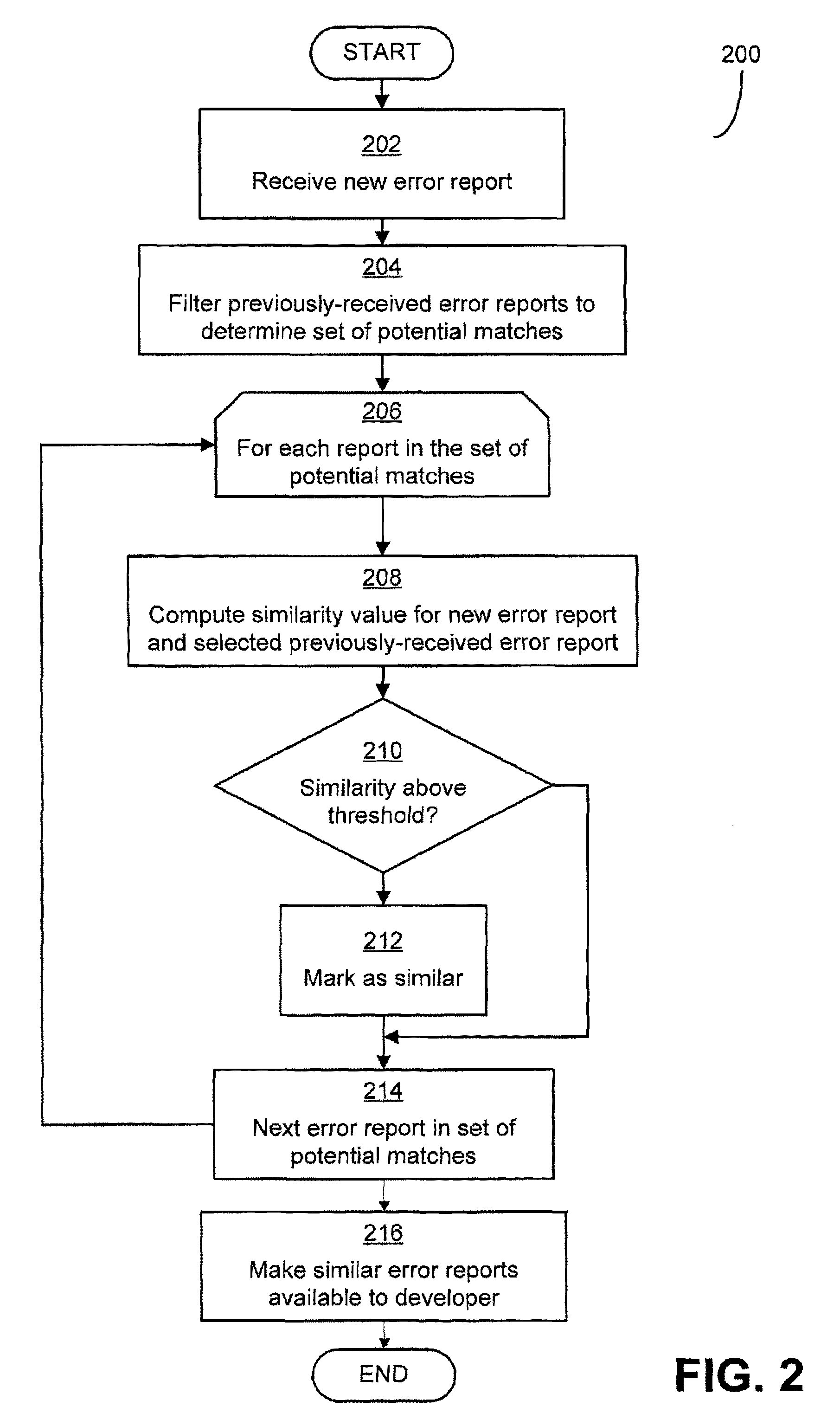Similarity detection for error reports
a similarity detection and error reporting technology, applied in the field of similarity detection of error reports, can solve the problems of large redundancy in the error report received by the error-reporting service, errors may arise in the software product, and generate the same errors, so as to reduce or eliminate the duplication of effort
- Summary
- Abstract
- Description
- Claims
- Application Information
AI Technical Summary
Benefits of technology
Problems solved by technology
Method used
Image
Examples
Embodiment Construction
[0026]Applicants have appreciated the desirability of automated techniques for more accurately identifying whether two error reports are similar If a high degree of similarity could be identified for two error reports, it could also be determined that the error reports may be caused by the same error and could thus be assigned to a same developer for review. This could reduce inefficiency and waste in reviewing error reports.
[0027]Applicants have further appreciated that identifying similarity between two error reports may be useful in the diagnosis of errors and the solution of errors. If a same error is giving rise to error reports in different circumstances or environments, and a developer is able to review a greater number of error reports in the different environments, then the developer may be able to more quickly identify the error by searching for a constant between the error reports. Further, when the developer is producing a solution for the error, multiple different error...
PUM
 Login to View More
Login to View More Abstract
Description
Claims
Application Information
 Login to View More
Login to View More - R&D
- Intellectual Property
- Life Sciences
- Materials
- Tech Scout
- Unparalleled Data Quality
- Higher Quality Content
- 60% Fewer Hallucinations
Browse by: Latest US Patents, China's latest patents, Technical Efficacy Thesaurus, Application Domain, Technology Topic, Popular Technical Reports.
© 2025 PatSnap. All rights reserved.Legal|Privacy policy|Modern Slavery Act Transparency Statement|Sitemap|About US| Contact US: help@patsnap.com



